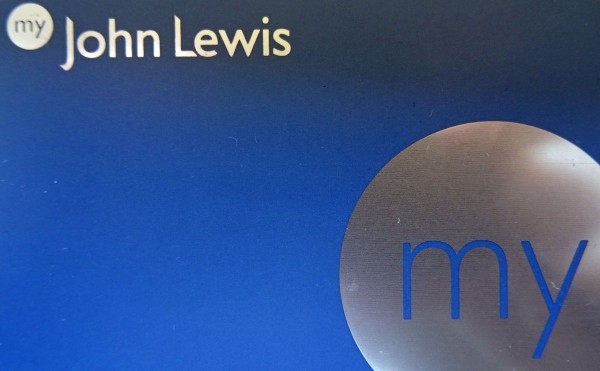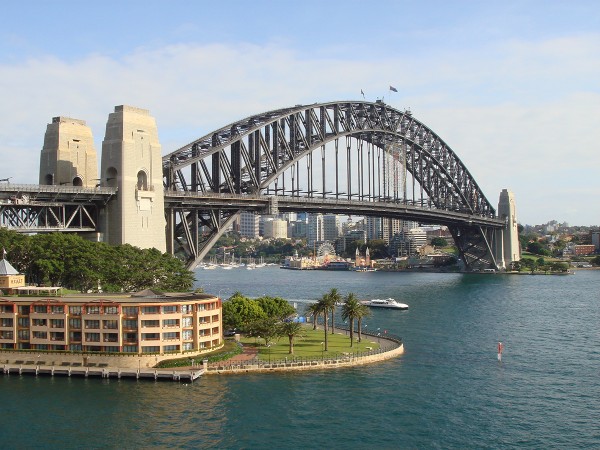 In an earlier post, Elizabeth looked at oligopolistic competition between supermarkets. Although supermarkets have been accused of tacit price collusion on many occasions in the past, price competition has been growing. And recent developments show that it is likely to get a lot fiercer as the ‘big four’ try to take on the ‘deep discounters’, Aldi and Lidl.
In an earlier post, Elizabeth looked at oligopolistic competition between supermarkets. Although supermarkets have been accused of tacit price collusion on many occasions in the past, price competition has been growing. And recent developments show that it is likely to get a lot fiercer as the ‘big four’ try to take on the ‘deep discounters’, Aldi and Lidl.
Part of the reason for the growth in price competition has been a change in shopping behaviour. Rather than doing one big shop per week in Tesco, Sainsbury’s, Asda or Morrisons, many consumers are doing smaller shops as they seek to get more for their money. A pattern is emerging for many consumers who are getting their essentials in Aldi or Lidl, their ‘special’ items in more upmarket shops, such as Waitrose, Marks & Spencer or small high street shops (such as bakers and ethnic food shops) and getting much fewer products from the big four. Other consumers, on limited incomes, who have seen their real incomes fall as prices have risen faster than wages, are doing virtually all their shopping in the deep discounters. As the Guardian article below states:
A steely focus on price and simplicity, against a backdrop of falling living standards that has sharpened customers’ eye for a bargain, has seen the discounter grab market share from competitors and transform what we expect from our weekly shop.
The result is that the big four are seeing their market share falling, as the chart shows.  (Click here for a PowerPoint of the chart.) In the past year, Tesco’s market share has fallen from 29.9% to 28.1%, Asda’s from 17.8% to 16.3%, Sainsbury’s from 16.9% to 16.2% and Morrisons’ from 11.7% to 11.0%. By contrast, Aldi’s has risen from 3.9% to 5.4% and Lidl’s from 3.1% to 4.0%, while Waitrose’s has also risen, from 4.7% to 4.9%. And it’s not just market share that has been falling for the big four. Profits have also fallen, as have share prices. Sales revenues in the four weeks to 13 September are down 1.6% on the same period a year ago; sales volumes are down 1.9%.
(Click here for a PowerPoint of the chart.) In the past year, Tesco’s market share has fallen from 29.9% to 28.1%, Asda’s from 17.8% to 16.3%, Sainsbury’s from 16.9% to 16.2% and Morrisons’ from 11.7% to 11.0%. By contrast, Aldi’s has risen from 3.9% to 5.4% and Lidl’s from 3.1% to 4.0%, while Waitrose’s has also risen, from 4.7% to 4.9%. And it’s not just market share that has been falling for the big four. Profits have also fallen, as have share prices. Sales revenues in the four weeks to 13 September are down 1.6% on the same period a year ago; sales volumes are down 1.9%.
But can the big four take on the discounters at their own game? Morrison’s has just announced a form of price match scheme called ‘Match & More’. If a shopper finds that a comparable grocery shop is cheaper in not only Tesco, Sainsbury’s or Asda, but also in Aldi or Lidl, then ‘Match & More users will automatically get the difference back in points on their card. Shoppers also will be able to collect extra points on hundreds of featured products and fuel’. When the difference has risen to a total £5 (5000 points), the shopper will get a £5 voucher at the till. The idea is to encourage customers to stay loyal to Morrisons.
 But what if Tesco, Asda and Sainsbury’s do the same? What will be the impact on their prices and profits. Will there be a race to the bottom in prices, or will they be able to keep prices higher than the deep discounters, hoping that many customers will not cash in their vouchers?
But what if Tesco, Asda and Sainsbury’s do the same? What will be the impact on their prices and profits. Will there be a race to the bottom in prices, or will they be able to keep prices higher than the deep discounters, hoping that many customers will not cash in their vouchers?
But if effectively the big four felt forced to cut their prices to match Aldi and Lidl, could they afford to do so? This depends on their comparative average costs. At first sight, it might be thought that the big four could succeed in profitably matching the discounters, thereby clawing back market share. After all, they are much bigger and it might be thought that they would benefit from greater economies of scale and hence lower costs.
But it is not as simple as this. The discounters have lower costs than the big four. Their shops are typically in areas where rents or land prices are lower; their shops are smaller; they carry many fewer lines and thus gain economies of scale on each line; they have a much higher proportion of own-brand products; products are displayed in the boxes they come in, thus saving on the staff costs of unpacking them and placing them on shelves; they buy what is cheapest and thus do not always display the same brands.
So is Morrison’s a wise strategy? Will other supermarkets be forced to follow? Is there a prisoners’ dilemma here and, if so, is there any form of collusion in which the big four can engage which is not illegal? Can the big four differentiate themselves from the discounters and the up-market supermarkets in ways that will attract back customers?
It is worrying times for the big four.
Articles
- Heavy Discounters Up Pressure On The UK’s Big Four Supermarkets
Alliance News, Rowena Harris-Doughty (3/6/14)
- Tesco loses more market share as supermarket sector slows to record low
CITY A.M., Catherine Neilan (23/9/14)
- Record low for grocery market growth as inflation disappears
Kantar World Panel, Fraser McKevitt (23/9/14)
- How Aldi’s price plan shook up Tesco, Morrison’s, Asda and Sainsbury’s
The Guardian, Sarah Butler (29/9/14)
- Sainsbury’s shares drop 7% on falling sales report
BBC News (1/10/14)
- Sainsbury results: the reaction
Food Manufacture, Mike Stones (3/10/14)
- Morrisons Becomes First Of Big Four Grocers To Price Match Aldi, Lidl
Alliance News, Rowena Harris-Doughty (2/10/14)
- UK: Morrisons Takes On Discounters With Price Match Card
KamCity (3/10/14)
- Morrisons to match the prices of Aldi and Lidl
The Telegraph, Graham Ruddick (2/10/14)
- Three reasons why Morrisons price-matching Aldi and Lidl is not a ‘gamechanger’
The Telegraph, Graham Ruddick (2/10/14)
Questions
- Would it be possible for the big four to price match the deep discounters?
- What is meant by the prisoners’ dilemma? In what ways are the big four in a prisoners’ dilemma situation?
- Assume that you had to advise Tesco on it strategy? What advise would you give it and why?
- Assume that two firms, M and A, are playing the following ‘game’: firm M pledges to match firm A’s prices; and firm A pledges to sell at 2% below M’s price. What will be the outcome of this game?
- Is Morrisons wise to adopt its ‘Match & More’ strategy?
- Why is it difficult for Morrisons to make a like-for-like comparison with Aldi and Lidl in its ‘Match & More’ strategy?
- Why may Aldi and Lidl benefit from Morrisons’ strategy?
 The round robin group stage of the World Cup was recently completed with 16 out of the 32 countries eliminated from the competition – including England, Italy and Spain. The remaining 16 countries progressed to the single game elimination section of the tournament. At the time of writing, the first round of elimination games had been completed with the remaining 8 teams proceeding to the quarter finals of the tournament. Two of these 8 elimination games ended as a draw after extra time. The winner was decided by a penalty shoot-out e.g. Brazil and Costa Rica. Are these shoot-outs just a lottery or are there any factors that significantly influence their outcome?
The round robin group stage of the World Cup was recently completed with 16 out of the 32 countries eliminated from the competition – including England, Italy and Spain. The remaining 16 countries progressed to the single game elimination section of the tournament. At the time of writing, the first round of elimination games had been completed with the remaining 8 teams proceeding to the quarter finals of the tournament. Two of these 8 elimination games ended as a draw after extra time. The winner was decided by a penalty shoot-out e.g. Brazil and Costa Rica. Are these shoot-outs just a lottery or are there any factors that significantly influence their outcome?
The penalty shoot-out was first introduced in June 1970 and has become an important part of competitions such as the World Cup and European Championships for national teams and The Champions League, UEFA Cup and FA Cup for club teams. English fans have suffered more than most with victory in only one out of the seven penalty-shoot outs they have been involved in at major tournaments. On average only three out of every five penalties taken were scored. Germany has a very different record. They have won six out of the seven shoot-outs they have participated in and have a scoring rate of 93%. The Czech Republic has an even better record as their players have not missed a single penalty in the three shoot-outs they have been involved in – including beating West Germany in 1976.
Each individual penalty can be thought of as an example of an interdependent or game theoretic situation. The penalty taker (PT) has to choose from one of three different strategies: shoot to the right, shoot to the left or shoot down the middle. The success of the penalty does not just depend on which of these strategies is chosen. It also depends on the choice made by the goalkeeper (GK) i.e. dive to the left, dive to the right or stay where they are.
In the jargon of game theory there is strategic interdependence. It can also be thought of as an example of a simultaneous game. After the ball is struck it takes approximately 0.3 seconds until it hits the back of the net!! Therefore it is impossible for the GK to observe the shot and respond. Instead they simply have to guess which way they think the PT will kick the ball and respond accordingly. The same reasoning applies to the PT. They cannot observe which way the keeper will dive before they strike the ball. A penalty shoot-out is also an example of a zero sum game. If one teams scores they are better off by one goal while the other team is worse off by one goal.
There is also a sequential element to the shoot- outs as in each round one team always follows another. Is there either a first or second mover advantage? Is there any advantage from always shooting first or second? This was a question investigated by some economists who analysed the data from 129 shoot-outs in ten different tournaments taken between June 1970 and June 2003. This cut-off was chosen because up until this point it could be argued that a penalty shoot-out was an example of a truly randomized field experiment. The team that won the coin toss was required to shoot first. Teams were not given a choice of whether to shoot first or second until the rules were amended in June 2003.
The economists found that the teams who took the first shot won in 78 (60.5%) cases while the team that shot second won in only 51 cases (39.5%). This evidence suggests that there is a significant first mover advantage. One explanation for this finding is that there is greater psychological pressure on the PTs who go second in each round of the shoot-off and this has a significantly negative effect on their performance. The researchers also found that in 19 of the 20 shoot-outs they observed after June 2003 the team that won the toss decided to kick first. They concluded that not only is there a first mover advantage, but that teams/players are aware of it.
If there is currently a first mover advantage which provides teams with an unfair advantage then is there anything that the football authorities could do to help reduce the bias? One suggestion is to change the order in which the teams shoot in each round. A similar approach could be taken to that used in tennis in order to determine the order of the server in a tie break.
Imagine a penalty shoot-out between England and Germany. The sequence below provides one possible alternative to the current structure of the contest.
Penalty 1: Germany England
Penalty 2: England Germany
Penalty 3: England Germany
Penalty 4: Germany England
Penalty 5: England Germany
Penalty 6: Germany England
This would involve increasing the number of penalties from 5 to 6 so that both teams get to shoot first in three rounds of the contest. Interestingly the authors also found any first mover advantages fell dramatically if the shoot-outs reached the sudden death stage.
It will be interesting to see if first mover advantages occur in the remaining games in the tournament.
The English Disease – How to handle pressure: lessons from penalty shoot-outs The Economist (14/6/14)
Penalty kick shootouts and the importance of shooting first Soccermetrics Research (3/1/11)
Game Theory Lesson: Man Utd v Chelsea Penalty Shootout Econfix (11/3/14)
World Cup Game Theory – What economics tells us about penalty kicks Slate (24/6/06)
Football penalty shoot-outs are unfair says new research LSE (16/12/10).
Questions
- Explain the difference between a sequential and simultaneous game.
- Explain how either the penalty taker or goal keeper might attempt to transform the penalty from a simultaneous to a sequential game. (Hint: watch the next time the Brazilian footballer, Neymar, takes a penalty!!!
- Give some examples of potential first or second mover advantages in other industries.
- What other factors might influence the outcome of a penalty shoot? Is it possible for researchers to obtain any data in order to control for any of the factors you have identified?
- Explain the difference between a zero sum game and a non-zero sum game. Give some real world examples of a non-zero sum game.
 When you think about John Lewis, you think of a large department store. It is a department store celebrating its 150th anniversary. Many large retailers, such as John Lewis, have expanded their product range throughout their history and have grown organically, moving into larger and more prominent locations. What’s the latest location? St Pancras station.
When you think about John Lewis, you think of a large department store. It is a department store celebrating its 150th anniversary. Many large retailers, such as John Lewis, have expanded their product range throughout their history and have grown organically, moving into larger and more prominent locations. What’s the latest location? St Pancras station.
The idea of a click-and-collect store has grown in popularity over the past decade. With more and more people working and leading very busy lives, together with the growth of online shopping, it is the convenience of this type of purchase which has led to many retailers developing click-and-collect. Indeed, for John Lewis, 33% of its internet sales do come through click-and-collect. However, John Lewis is going a step further and its new strategy is reminiscent of companies like Tesco. If you just need to pop into Tesco to get some milk, you’re likely to go to the local Tesco express. The first mover advantage of Tesco in this market was vital.

John Lewis is unusual in that it is owned by its employees and this ownership structure has proved successful. Despite a long history, John Lewis has moved with the times and this latest strategy is further evidence of that. In today’s world, convenience is everything and that is one of the key reasons behind its new St Pancras convenience store. It will allow customers to purchase items and then collect them on their way to and from work – click-and-commute, but it will also provide customers with an easily accessible place to buy electronic equipment and a range of household goods. The retail director, Andrew Murphy said:
In the battleground of convenience, we are announcing a new way for commuters to shop with us … Customers spend a huge amount of time commuting, and our research shows that making life easier and shopping more convenient is their top priority.
This appears to be the first of many smaller convenience stores, enabling John Lewis to gain a presence in seemingly impossible places, given the normal size of such Department stores. For many people, commuting to and from work often involves waiting at transport hubs – one of the big downsides to not driving. So it seems sensible for such an established retailer to take advantage of commuters waiting for their train or plane to arrive, who have time to kill. The following articles consider this new direction for an old retailer.
John Lewis to open St Pancras convenience store BBC News (2/5/14)
John Lewis thinks small with convenience store The Guardian, Zoe Wood (2/5/14)
John Lewis to trial convenience store click-and-collect format at St Pancras Retail Week, Ben Cooper (2/5/14)
 Why is click and collect proving so popular? BBC News, Phil Dorrell (2/5/14)
Why is click and collect proving so popular? BBC News, Phil Dorrell (2/5/14)
 The rise of click and collect for online shoppers BBC News, Phil Dorrell (2/5/14)
The rise of click and collect for online shoppers BBC News, Phil Dorrell (2/5/14)
Questions
- What are the advantages and disadvantages of the organisational and ownership structure of John Lewis?
- How would you classify this new strategy?
- How do you think this new strategy will benefit John Lewis in terms of its market share, revenue and profit?
- Is it likely that John Lewis will be able to target new customers with this new convenience store strategy?
- How important is a first-mover advantage when it comes to retail? Using game theory, can you create a game whereby there is clear first mover advantage to John Lewis?
 Finance ministers and central bank officials of the G20 countries are meeting in Sydney from 20 to 23 February. Business leaders from these countries are also attending and have separate meetings.
Finance ministers and central bank officials of the G20 countries are meeting in Sydney from 20 to 23 February. Business leaders from these countries are also attending and have separate meetings.
Amongst the usual discussions at such meetings about how to achieve greater global economic stability and faster and sustained economic growth, there are other more specific agenda issues. At the Sydney meeting these include a roundtable discussion to identify practical solutions to lift infrastructure investment. They also include discussions on how to clamp down on tax avoidance through means such as transfer pricing.
The G20 meetings of finance and business leaders take place annually. There are also annual summits of heads of government (the next being in Brisbane in November 2014).
The G20 was formed in 1999 to extend the work of the G8 developed countries to include other major developed and developing countries plus the EU. In 2008/9 it played a significant role in helping devise policies to tackle the banking crisis and combat the subsequent recession. At the time there was a common purpose, which made devising common policies easier.
Since then, the importance of the G20 has waned. Partly this is because of the divergent problems and issues between members and hence the difficulty of reaching agreements. Partly it is because, to be effective, it needs to remain small but, to be inclusive, it needs to extend beyond the current 20 members. Indeed there has been considerable resentment from many countries outside the G20 that their views are not being represented. Some representatives from non-G20 countries attend meetings on an informal basis.
The following articles discuss the role of the G20 and whether it is fit for purpose.
Articles
Janet Yellen vs. the world: The issues at the G20 finance summit Globe and Mail (Canada), Iain Marlow (20/2/14)
Turning ideas into action at the G20 Business Spectator (Australia), Mike Callaghan (21/2/14)
Boosting infrastructure investment can prove G20’s value to the world The Conversation, Andrew Elek (20/2/14)
Can the G20 ever realise its potential? The Conversation, Mark Beeson (21/2/14)
G20 has failed to fulfil its promise of collaboration amid hostility The Guardian, Larry Elliott (20/2/14)
Official G20 site
G20 Priorities G20
Australia 2014 G20
News G20
Questions
- Which countries are members of the G20? Compile a list of those countries you feel ought to be members of such an organisation.
- What are the arguments for and against increasing the membership of the G20 (or decreasing it)?
- Why is Janet Yellen, Chair of the US Federal Reserve, likely to be at odds with leaders from other G20 countries, especially those from developing countries?
- Why have the tensions between G20 members increased in recent months?
- Discuss possible reforms to the IMF and the G20’s role in promoting such reforms.
- What insights can game theory provide in understanding the difficulties in reaching binding agreements at G20 meetings? Are these difficulties greater at G20 than at G8 meetings?
- Should the G20 be scrapped?
 In market capitalism, the stock of manufactured capital provides a flow of output. The profitability of the use of that capital depends on the cost of investing in that capital and the cost of using it, and on the flow of revenues from that capital. Discounted cash flow techniques can be used to assess the profitability of a given investment in capital; the flows of costs and revenues are discounted at a market discount rate to give a net present value (NPV). If the NPV is positive (discounted revenues exceed discounted costs), the investment is profitable; if it is negative, the investment is unprofitable. (See Economics, 8th edition, section 9.3.)
In market capitalism, the stock of manufactured capital provides a flow of output. The profitability of the use of that capital depends on the cost of investing in that capital and the cost of using it, and on the flow of revenues from that capital. Discounted cash flow techniques can be used to assess the profitability of a given investment in capital; the flows of costs and revenues are discounted at a market discount rate to give a net present value (NPV). If the NPV is positive (discounted revenues exceed discounted costs), the investment is profitable; if it is negative, the investment is unprofitable. (See Economics, 8th edition, section 9.3.)
There may be market imperfections in the allocation of investment, in terms of distorted prices and interest rates. These may be the result of market power, asymmetry of information, etc., but in many cases the market allows capital investment to be allocated relatively efficiently.
Natural capital
This is not the case with ‘natural capital’. Natural capital (see also) is the stock of natural resources and ecosystems that, like manufactured capital, yields a flow of goods and services into the future.  Natural capital, whilst it can be improved or degraded by human action, is available without investment. Thus the natural capital of the oceans yields fish, the natural capital of the skies yields rain and the natural capital of forests reduces atmospheric CO2.
Natural capital, whilst it can be improved or degraded by human action, is available without investment. Thus the natural capital of the oceans yields fish, the natural capital of the skies yields rain and the natural capital of forests reduces atmospheric CO2.
Even though some natural capital is owned (e.g. private land), much is a common resource. As such, it is free to use and tends to get overused. This is the Tragedy of the Commons – see, for example, the following news items: A modern tragedy of the commons and Is there something fishy going on?.
Natural capital accounting
But would it be possible to give a value to both the stock of natural capital and the goods and services provided by it? Would this environmental accounting enable governments to tax or subsidise firms and individuals for their use or enhancement of natural capital?
On 21 and 22 November 2013, the first World Forum on Natural Capital took place in Edinburgh. This brought together business leaders, politicians, economists, environmentalists and other scientists to discuss practical ways of taking natural capital into account in decision making. Central to the forum was a discussion of ways of valuing natural capital, or ‘natural capital accounting’. As the forum site states:
Natural capital accounting is a rapidly evolving new way of thinking about how we value the economic benefits we derive from our natural environment. The World Forum on Natural Capital will bring together world-class speakers, cutting edge case studies and senior decision makers from different sectors, in order to turn the debate into practical action.

But if natural capital is not owned, how is it to be priced? How will the costs and benefits of its use be valued? How will inter-generational effects be taken into account? Will firms price natural capital voluntarily if doing so reduces their profits? Will firms willingly extend corporate social responsibility to include corporate environmental responsibility? Will governments be prepared to introduce taxes and subsidies to internalise the costs of using natural capital, even if the effects extend beyond a country’s borders? Will natural capital accounting measure purely the effects on humans or will broader questions of maintaining and protecting environmental diversity for its own sake be taken into account? These are big questions and ones that various organisations are beginning to address.
Despite problems of measurement and incentives, sometimes there are clear economic benefits from careful evaluation and management of natural capital. Julia Marton-Lefèvre is Director General of the International Union for Conservation of Nature (IUCN). According to the first Guardian article below:
Her favourite example of natural capital working in practice comes from Vietnam, where “planting and protecting nearly 12,000 hectares of mangroves cost just more than $1m but saved annual expenditures on dyke maintenance of well over $7m. And that only accounts for coast maintenance: mangroves are also nurseries for fish, meaning livelihoods for fishing and source of nutrients … “
One organisation attempting to value natural capital is The Economics of Ecosystems and Biodiversity project (TEEB). It also looks at what organisational changes are likely to be necessary for the management of natural capital.
Based on data collected from 26 early adopter companies (60% of them with $10 Billion+ revenues each) across several industry sectors this provides real life evidence on the drivers and barriers for natural capital management.
 Pricing the environment is a highly controversial issue. Critics claim that the process can easily be manipulated to serve the short-term interests of business and governments. What is more, where tradable permits markets have been set up, such as the EU’s Emissions Trading Scheme (ETS), prices have often been a poor reflection of social costs and have been open to manipulation. As Nick Dearden, director of the World Development Movement (WDM), says:
Pricing the environment is a highly controversial issue. Critics claim that the process can easily be manipulated to serve the short-term interests of business and governments. What is more, where tradable permits markets have been set up, such as the EU’s Emissions Trading Scheme (ETS), prices have often been a poor reflection of social costs and have been open to manipulation. As Nick Dearden, director of the World Development Movement (WDM), says:
It is deeply ironic that the same financial markets that caused the economic crisis are now seen as the solution to our environmental crisis. It’s about time we learnt that financial markets need to be reined in, not expanded. Pricing these common resources on which people depend for their survival leaves all of us more exposed to the forces of the global economy, and decisions about whether or not to protect them become a matter of accounting.
The measurement of natural capital and setting up systems to internalise the costs and benefits of using natural capital is both complex and a political minefield – as the following articles show.
Articles
Putting a value on nature: Edinburgh conference says business is ‘part of the solution’ Blue & Green Tomorrow, Nicky Stubbs (20/11/13)
Edinburgh forum says putting value on nature could save it BBC News, Claire Marshall (20/11/13)
Natural capital must be the way forward, says IUCN director general The Guardian, Tim Smedley (11/11/13)
Is ‘natural capital’ the next generation of corporate social responsibility? The Guardian, Tim Smedley (7/11/13)
Natural capital accounting: what’s all the fuss about? The Guardian, Alan McGill (27/9/13)
Put nature at the heart of economic and social policymaking The Guardian, Aniol Esteban (1/3/13)
Campaigners warn of dangers of ‘privatised nature’ The Scotsman, Ilona Amos (21/11/13)
Edinburgh conference attempts to ‘privatise nature’ World Development Movement, Miriam Ross (18/11/13)
 Valuing Nature BBC Shared Planet, Monty Don (8/7/13)
Valuing Nature BBC Shared Planet, Monty Don (8/7/13)
Sites concerned with natural capital
World Forum on Natural Capital
TEEB for Business Coalition
International Union for Conservation of Nature
Questions
- How would you define natural capital?
- What are ecosystem services?
- Is social efficiency the best criterion for evaluating the use of the environment? What other criteria could you use?
- How would you set about deciding what rate of discount to use when evaluating the depletion of or enhancement of natural capital?
- How can game theory provide insights into the strategies of both businesses and governments towards the environment?
- What are the arguments for and against attempting to value natural capital and to incorporate these values in decision making?
 In an earlier post, Elizabeth looked at oligopolistic competition between supermarkets. Although supermarkets have been accused of tacit price collusion on many occasions in the past, price competition has been growing. And recent developments show that it is likely to get a lot fiercer as the ‘big four’ try to take on the ‘deep discounters’, Aldi and Lidl.
In an earlier post, Elizabeth looked at oligopolistic competition between supermarkets. Although supermarkets have been accused of tacit price collusion on many occasions in the past, price competition has been growing. And recent developments show that it is likely to get a lot fiercer as the ‘big four’ try to take on the ‘deep discounters’, Aldi and Lidl. (Click here for a PowerPoint of the chart.) In the past year, Tesco’s market share has fallen from 29.9% to 28.1%, Asda’s from 17.8% to 16.3%, Sainsbury’s from 16.9% to 16.2% and Morrisons’ from 11.7% to 11.0%. By contrast, Aldi’s has risen from 3.9% to 5.4% and Lidl’s from 3.1% to 4.0%, while Waitrose’s has also risen, from 4.7% to 4.9%. And it’s not just market share that has been falling for the big four. Profits have also fallen, as have share prices. Sales revenues in the four weeks to 13 September are down 1.6% on the same period a year ago; sales volumes are down 1.9%.
(Click here for a PowerPoint of the chart.) In the past year, Tesco’s market share has fallen from 29.9% to 28.1%, Asda’s from 17.8% to 16.3%, Sainsbury’s from 16.9% to 16.2% and Morrisons’ from 11.7% to 11.0%. By contrast, Aldi’s has risen from 3.9% to 5.4% and Lidl’s from 3.1% to 4.0%, while Waitrose’s has also risen, from 4.7% to 4.9%. And it’s not just market share that has been falling for the big four. Profits have also fallen, as have share prices. Sales revenues in the four weeks to 13 September are down 1.6% on the same period a year ago; sales volumes are down 1.9%. But what if Tesco, Asda and Sainsbury’s do the same? What will be the impact on their prices and profits. Will there be a race to the bottom in prices, or will they be able to keep prices higher than the deep discounters, hoping that many customers will not cash in their vouchers?
But what if Tesco, Asda and Sainsbury’s do the same? What will be the impact on their prices and profits. Will there be a race to the bottom in prices, or will they be able to keep prices higher than the deep discounters, hoping that many customers will not cash in their vouchers?







